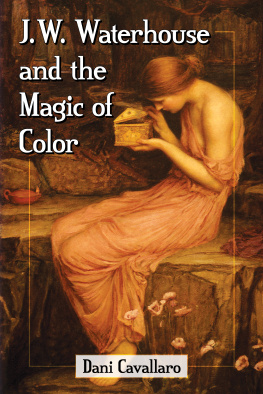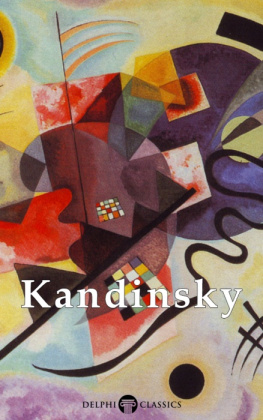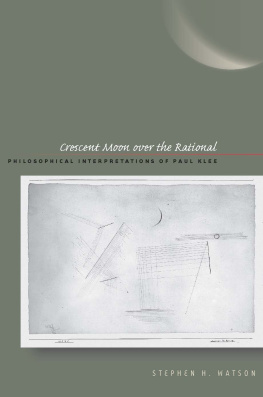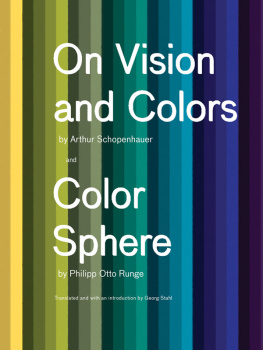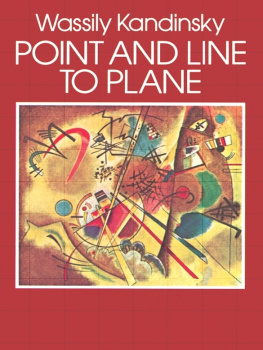
SELECTED WORKS BY DANI CAVALLARO
AND FROM MCFARLAND
Synesthesia and the Arts (2013)
Japanese Aesthetics and Anime: The Influence of Tradition (2013)
Art in Anime: The Creative Quest as Theme and Metaphor (2012)
The Mind of Italo Calvino: A Critical Exploration of His Thought and Writings (2010)
The Art of Studio Gainax: Experimentation, Style and Innovation at the Leading Edge of Anime (2009)
The Anim Art of Hayao Miyazaki (2006)
J.W. Waterhouse and the Magic of Color
Dani Cavallaro

McFarland & Company, Inc., Publishers
Jefferson, North Carolina
All images are from PicturesNow.com
LIBRARY OF CONGRESS CATALOGUING DATA ARE AVAILABLE
BRITISH LIBRARY CATALOGUING DATA ARE AVAILABLE
e-ISBN: 978-1-4766-2846-2
2017 Dani Cavallaro. All rights reserved
No part of this book may be reproduced or transmitted in any form or by any means, electronic or mechanical, including photocopying or recording, or by any information storage and retrieval system, without permission in writing from the publisher.
Front cover: Psyche Opening the Golden Box, J.W. Waterhouse, 1903 (PicturesNow)
McFarland & Company, Inc., Publishers
Box 611, Jefferson, North Carolina 28640
www.mcfarlandpub.com
To Paddy,
with infinite gratitude for inspiring
the conception of this book,
and encouraging its advancement.
Preface
Having, after a long career distinguished by unparalleled acclaim, been relegated to the periphery of art history by mainstream criticism between his death in 1917 and the 1950s, John William Waterhouse began to regain popularity in the early 1960s, and now stands as a favorite among Victorian painting connoisseurs, art lovers, and the general public. Evidence for this phenomenon can be gleaned from both popular and specialist markets: the 1888 version of his Lady of Shalott has been Tate Britains best-selling postcard for years, while the art worlds revived interest in the painter has reached a new level since the Andrew Lloyd Webber Art Foundations acquisition of his St Cecilia in 2000 for 6.6 million (about $9.5 million), the highest price ever paid for a Victorian canvas.
The present study pursues a bipartite argument, proposing that Waterhouses art prioritizes color both as the keystone of an aesthetic vision informed by an original concept of formalism, and as the essence of a specific worldview predicated on a generous recognition of lifes metamorphic elusiveness.

Chapter One, The Artist, sets the stage for the investigation conducted in the following chapters by means of a concise biographical survey.
Chapter Two, Waterhouses Perspective on Color, examines colors significance as the pivot of the artists aesthetic vision and worldview, with reference to a discrete selection of representative theoretical positions.
Chapter Three, Color and Aestheticism, assesses Waterhouses stance on the ethos of art for arts sake. This philosophy upholds arts autonomy, claiming that art should not be made subservient to morals, religion or politics, and that the artworks status as an object is more important than its subject matter. Waterhouses oeuvre yields an original interpretation of the Aesthetic position by employing color as a means of prioritizing arts formal qualities, and hence discouraging its appreciation with reference to elements extraneous to the visual field as such.
Chapter Four, Narrative Color, explores the artists use of color as a vehicle for the redefinition of narrative painting. Instead of recounting a tale in the traditional sense, Waterhouse deploys particular chromatic signposts to guide the eye across the canvas in an unobtrusive fashion, drawing attention not the pictures temporal unfolding per se, but rather to the unique moment in the narrative at which a change begins to take place.
Chapter Five, Color and Desire, argues that Waterhouses art deploys color as a way of tackling a universal human theme: the unfulfillable nature of the yearning for completion and wholeness. The pictorial encounter between human and supernatural agencies, a topos central to several of his principal works, epitomizes this central preoccupation.
Chapter Six, The Materiality of Color, addresses Waterhouses conception of color as a physical reality designed for sensuous appreciation, and therefore free from any ethical, doctrinal or social obligations, with reference to his handling of particular techniques and chromatic schemes.
Chapter Seven, Color in Nature, engages with Waterhouses employment of color as a means of infusing the environment with energy and magic, commenting on the artists treatment of the natural worlds kaleidoscopic glories in all their guises.
Chapter Eight, Color in Decor and Dress, concentrates on Waterhouses ideation of artificial environments in which clothes, accessories, furniture, props, and even patterns stand out as animate entities imbued with a deep sense of humanity, and rare sensitivity to the ephemerality of love, pleasure and life itself.

Existing studies of Waterhouses work tend to concentrate on the biographical and thematic dimensions. While the artists power as a colorist is widely acknowledged, no in-depth evaluation of his treatment of this expressive medium has yet been released. This book offers an innovative approach to Waterhouses art by focusing on this relatively neglected aspect of the artists aesthetic for the benefit of both art students and non-specialists.
It should also be noted that even though the present study makes reference to various critical interpretations of color, it is not meant to supply an exhaustive investigation of either color theory as such, or the role of color in diverse disciplines (such as philosophy, physics, psychology, etc.). On the contrary, the views on color included have been chosen specifically in the light of their relevance to Waterhouses own approach to color.

Not often is the fabric of everyday life ruptured by intimations of an elsewhere extending beyond the edges of the familiar. Yet, such intimations are not in themselves infrequent. What causes them to be seldom noticed is the blinding power of material preoccupations, and the thirst for self-promotion. As Wordsworth puts it, Getting and spending, we lay waste our powers: / Little we see in Nature that is ours.
The senses are not, however, forever dormant. There can be moments, even amidst the dullest routine, when they awaken unexpectedly to the presence of worlds of the imagination whose existence they have never hitherto envisioned in either reverie or toil. At such moments, places like Coleridges Xanadu and Yeats Lake Isle of Innisfree appear to be far more substantial than mere dreams.
The contemplation of a picture brimming with evocative colors, capable of appealing to the emotions with both candor and grace, may well supply just one such special moment, by opening a portal to an otherwise inaccessible dimension. Endowed with this power to an uncommon degree, John William Waterhouses art ushers its viewers into realms which ordinary life insistently ignores, offering transformation and inspiring creativity.
Next page
